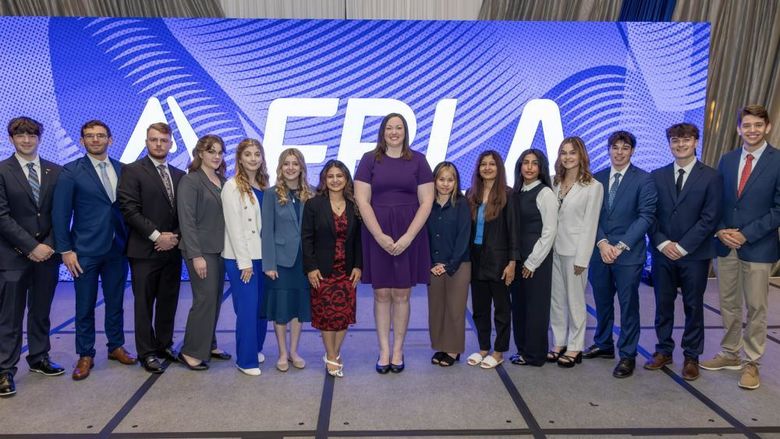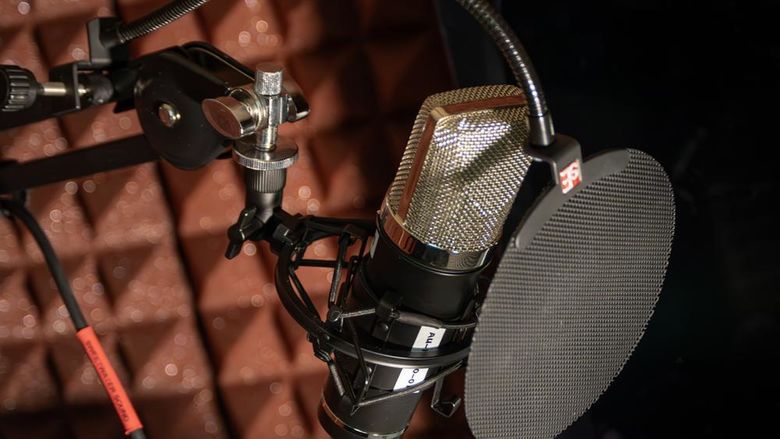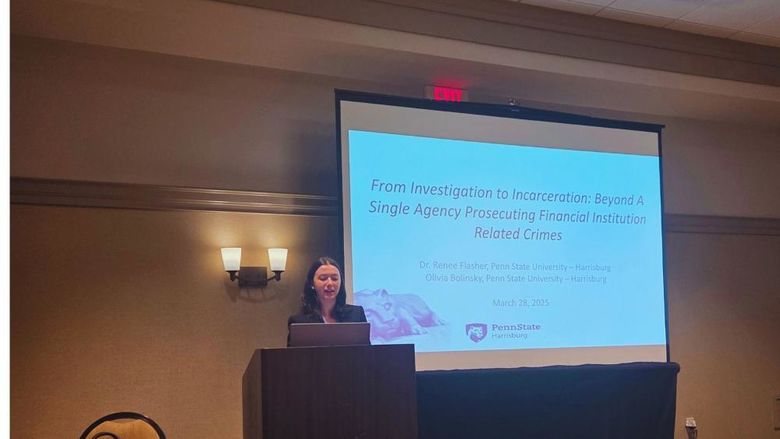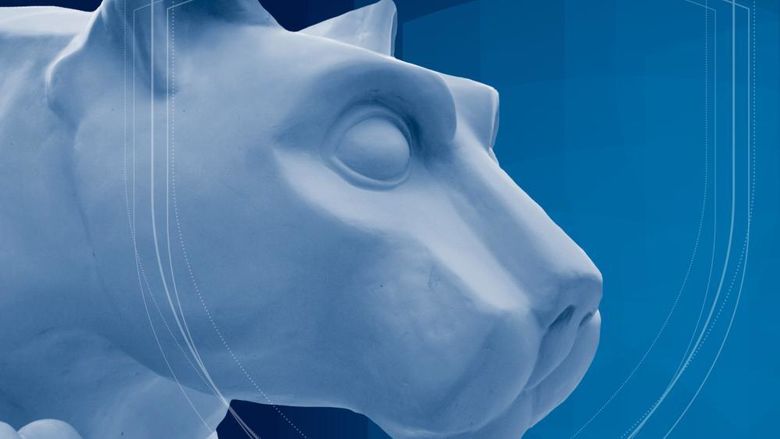Pictured are Martha Strickland’s students after their presentation at the 19th annual Pennsylvania Chapter of the National Association of Multicultural Education conference. From left to right are Shuhang Liu, Abigail O’Reilly, Luke Mummau, and Kim Stielper.
Digital innovation is driving creative approaches to the challenges facing the teachers of tomorrow.
With the help of Penn State Media Commons, sophomore and junior teacher education students at Penn State Harrisburg spent most of the fall 2016 semester creating multimedia projects based on research into how pre-service teachers grapple with diversity issues in K-12 classrooms. Two of these, focusing on gender diversity in the classroom and using hip-hop to engage English-language learners, were presented at the 19th annual Pennsylvania Chapter of the National Association of Multicultural Education conference this spring at Dickinson College.
“They had a full room (at the conference) and they were answering questions — these things work, these things didn’t work, here’s how we did it, and this is what we learned,” said Martha Strickland, associate professor of education and educational psychology. “To me, it’s satisfying as a professor, but to them, they walked away with something that’s digital in their portfolio.”
Media Commons helped Strickland plan the project deliverables and training schedule. “We then provided in-class training to address the technologies and techniques students would be using and to make them aware of our support resources both on campus and online,” said Media Commons consultant Nick Smerker. The final three-minute presentations took advantage of several additional components of Media Commons, from the One Button Studio for shooting video to royalty-free graphics to enhance the presentations.
Sophomores in Strickland’s Introduction to Educational Psychology class shared their projects in Box and created handouts to teach each other about their topics, which ranged from disabilities in the classroom to homelessness.
Juniors in her Learning Theory and Instructional Procedure class developed their videos as informational pieces to be used in the class they are teaching in high school or shared with parents or other teachers.
There was definitely a higher level of engagement in her classes, Strickland said, and she observed that, since students were essentially teaching each other, they started to value each other’s conversations.
Junior Kimberly Stielper said students were able to express their creativity and learn new skills as they took on roles such as project manager, technical editor, and print editor during the collaboration. “Overall, the project forced us to step outside of our comfort zone and explore other possibilities for conveying information,” she said.
Strickland said that with the full workloads faculty carry, from research to grant writing, it can be a challenge to incorporate digital innovation in the classroom that succeeds in meeting course learning objectives. She hopes that other faculty will see that there are helpful resources out there like Media Commons and that they are not a burden.
“It actually enhances what you want to do and it excites you,” Strickland said. “It brings some energy to what you’re doing already and the content that you have.”
In the future, Strickland said she wants students to interview people in the community and create a more documentary-style project to enhance their understanding of the issues they come across in teaching.
“These students are going to be teachers, so they’re not always going to have accessible to them the highest levels of technology, but they’re going to have a variety of technological devices available to them,” Strickland said. “It’s a matter of how do you take what you have and then maximize it.”




